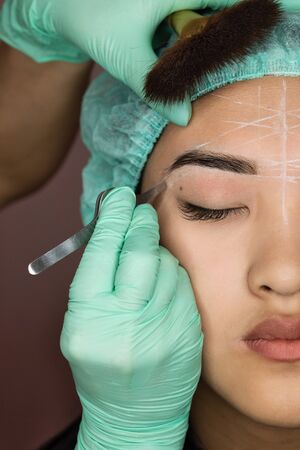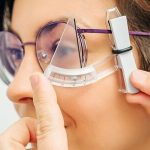What Is Laser Skin Resurfacing?
Laser skin resurfacing is a non-surgical cosmetic procedure that helps improve skin texture, tone, and overall appearance. It uses laser technology to remove damaged skin layers, stimulate collagen production, and promote new skin cell growth. This treatment is popular for reducing fine lines, wrinkles, acne scars, sun damage, and uneven pigmentation.
How Does Laser Skin Resurfacing Work?
The procedure works by directing concentrated beams of light at the skin’s surface. These lasers either remove the outer layer of the skin (ablative lasers) or penetrate deeper without damaging the surface (non-ablative lasers). Both methods encourage skin regeneration and collagen production, resulting in smoother, younger-looking skin over time.
Types of Lasers Used for Skin Resurfacing
Different types of lasers are used in skin resurfacing treatments, each with its own benefits and level of intensity. The two main categories are ablative and non-ablative lasers.
| Type of Laser | Description | Best For |
|---|---|---|
| Ablative Lasers | Removes the outer layer of skin to reveal fresh, new skin underneath. Requires more recovery time but delivers dramatic results. | Deep wrinkles, scars, significant sun damage |
| Non-Ablative Lasers | Heats underlying skin tissue without removing the surface layer. Less downtime but requires multiple sessions for optimal results. | Mild wrinkles, uneven tone, minimal downtime needs |
Ablative Lasers: More Intensive Treatment
Ablative lasers work by vaporizing the top layer of damaged skin. This process stimulates collagen production and promotes new skin growth. While results can be significant, healing time can range from several days to a few weeks. Common types include CO2 lasers (best for deep wrinkles and scars) and Erbium lasers (effective for moderate wrinkles with less downtime).
Non-Ablative Lasers: Minimal Downtime
Non-ablative lasers penetrate the deeper layers of the skin without removing the surface layer. They are ideal for those who want gradual improvements with little to no recovery time. Examples include fractional lasers and intense pulsed light (IPL) treatments.
2. Key Benefits of Laser Skin Resurfacing
Laser skin resurfacing offers a non-surgical way to achieve smoother, younger-looking skin. Whether youre dealing with fine lines, acne scars, or sun damage, this treatment can significantly improve your skin’s appearance. Here are the key benefits you can expect:
Improved Skin Texture
One of the biggest advantages of laser skin resurfacing is its ability to refine skin texture. The laser removes damaged outer layers while stimulating collagen production, leaving your skin feeling softer and looking more even.
Reduction of Wrinkles and Fine Lines
If youre noticing signs of aging like crow’s feet or forehead wrinkles, laser treatment can help smooth them out. By encouraging new collagen growth, laser resurfacing reduces the depth of wrinkles for a more youthful look.
Treatment for Acne Scars
Acne scars can be frustrating, but laser skin resurfacing can minimize their appearance by breaking down scar tissue and promoting new cell regeneration. Over time, this leads to clearer and more even-toned skin.
Repairing Sun Damage
Years of sun exposure can lead to dark spots, rough patches, and uneven pigmentation. Laser treatments target these issues by removing damaged layers and allowing fresh, healthy skin to emerge.
Comparison of Key Benefits
| Benefit | Description |
|---|---|
| Smoother Skin Texture | Evens out rough patches and makes skin feel softer. |
| Fewer Wrinkles | Reduces fine lines and deep wrinkles for a youthful look. |
| Lighter Acne Scars | Diminishes acne scars by promoting new skin growth. |
| Less Sun Damage | Treats dark spots and discoloration caused by UV exposure. |

3. What to Expect During and After Treatment
A Step-by-Step Guide to the Procedure
Laser skin resurfacing is a non-surgical treatment that helps improve skin texture, reduce wrinkles, and minimize scars. Here’s what you can expect during the procedure:
Step 1: Consultation
Your journey starts with a consultation where a skincare professional assesses your skin type, concerns, and goals to determine the best laser treatment for you.
Step 2: Preparing Your Skin
Before the procedure, you may be advised to avoid sun exposure and use specific skincare products to prepare your skin for optimal results.
Step 3: The Procedure
The treatment typically lasts between 30 minutes to two hours, depending on the area being treated. A numbing cream or local anesthesia may be applied to ensure comfort. The laser device is then used to remove damaged skin layers and stimulate collagen production.
Step 4: Immediate Aftercare
After the procedure, your skin may feel warm, similar to a mild sunburn. A cooling mask or soothing ointment is often applied to help with discomfort.
Recovery Time and Healing Process
The recovery period varies based on the type of laser used and individual skin responses. Below is an overview of what you can expect:
| Timeframe | What to Expect | Care Tips |
|---|---|---|
| First 24-48 Hours | Redness, swelling, and sensitivity. | Avoid touching your face; apply soothing ointments as recommended. |
| Days 3-7 | Peeling and flaking begin as new skin forms. | Keep skin moisturized; avoid picking at peeling areas. |
| Week 2+ | Smoother, clearer skin starts becoming visible. | Use sunscreen daily; continue gentle skincare routine. |
Aftercare Tips for Optimal Results
Avoid Sun Exposure
Your skin will be more sensitive after treatment. Use a broad-spectrum sunscreen with SPF 30+ daily to protect against UV damage.
Stay Hydrated and Moisturized
K eeping your skin well-hydrated promotes faster healing. Use gentle, hydrating skincare products recommended by your provider.
Avoid Harsh Skincare Products
Avoid exfoliants, retinol, or any strong active ingredients until your skin fully recovers to prevent irritation.
4. Is Laser Skin Resurfacing Right for You?
Laser skin resurfacing is an effective treatment for many skin concerns, but it’s not a one-size-fits-all solution. Understanding who benefits the most and what factors to consider can help you decide if this treatment is right for you.
Who Can Benefit from Laser Skin Resurfacing?
This treatment works well for people looking to improve their skin’s texture, tone, and overall appearance. It can be especially beneficial for those dealing with:
- Fine lines and wrinkles
- Sun damage
- Acne scars
- Uneven skin tone
- Enlarged pores
- Hyperpigmentation
Factors to Consider Before Treatment
Before deciding on laser skin resurfacing, its important to consider a few key factors:
| Factor | Description |
|---|---|
| Skin Type | Darker skin tones may require specific laser types to reduce the risk of pigmentation issues. |
| Downtime | Certain lasers require more recovery time than others; consider your schedule before choosing a treatment. |
| Sensitivity | If you have sensitive skin, you may experience more redness and irritation post-treatment. |
| Treatment Goals | Your desired results will determine whether a mild or aggressive laser treatment is best. |
| Medical History | Certain conditions like active acne or autoimmune disorders may affect eligibility. |
The Importance of a Professional Consultation
A consultation with a qualified provider is crucial to determine if laser skin resurfacing is suitable for your specific needs. They will assess your skin type, medical history, and goals to recommend the best approach for optimal results.
5. How to Choose the Right Provider
Selecting the right provider for laser skin resurfacing is crucial to ensuring safe and effective results. With so many dermatologists and medical spas offering laser treatments, it’s important to know what to look for before making a decision. Here are some key tips to help you choose the best provider.
Check Credentials and Experience
Not all laser providers have the same level of training or experience. Look for board-certified dermatologists or licensed medical professionals who specialize in laser treatments. Experience matters when it comes to using advanced laser technology safely.
Questions to Ask About Credentials
| What to Ask | Why It Matters |
|---|---|
| Are you board-certified in dermatology? | Board certification ensures specialized medical training in skin care. |
| How many years of experience do you have with laser resurfacing? | An experienced provider reduces risks and improves treatment outcomes. |
| Do you have before-and-after photos of previous patients? | This helps gauge the provider’s skill and expected results. |
Research the Facility
The setting where you receive your treatment should be clean, professional, and equipped with FDA-approved laser devices. Medical spas should be overseen by a qualified physician, ensuring that all procedures meet safety standards.
Signs of a Reputable Facility
- A clean, well-maintained environment
- The use of modern, FDA-approved laser equipment
- A physician or dermatologist overseeing treatments
- A thorough consultation process before treatment begins
Read Reviews and Testimonials
Past patient experiences can give insight into the quality of care provided. Look at online reviews on platforms like Google, Yelp, or RealSelf to see if other clients were satisfied with their results and overall experience.
What to Look for in Reviews
- Satisfied Patients: Consistently positive feedback about results and professionalism.
- No Red Flags: Avoid providers with frequent complaints about burns, scarring, or poor customer service.
- Diverse Testimonials: Look for reviews from people with similar skin concerns as yours.
Avoid Unrealistic Promises
If a provider guarantees “instant” or “permanent” results without mentioning possible side effects or recovery time, it’s a red flag. A reputable specialist will set realistic expectations and discuss potential risks with you upfront.
The Importance of a Consultation
A good provider will offer an in-depth consultation before your treatment. This is your chance to ask questions, discuss your skin concerns, and determine if laser resurfacing is right for you.
What Should Be Covered in Your Consultation?
- Your skin type and concerns
- The type of laser best suited for your needs
- The number of sessions required for optimal results
- The expected downtime and aftercare instructions
Selecting the right provider ensures that your laser skin resurfacing treatment is both safe and effective. Take the time to research credentials, read reviews, and schedule a consultation before making your decision.


